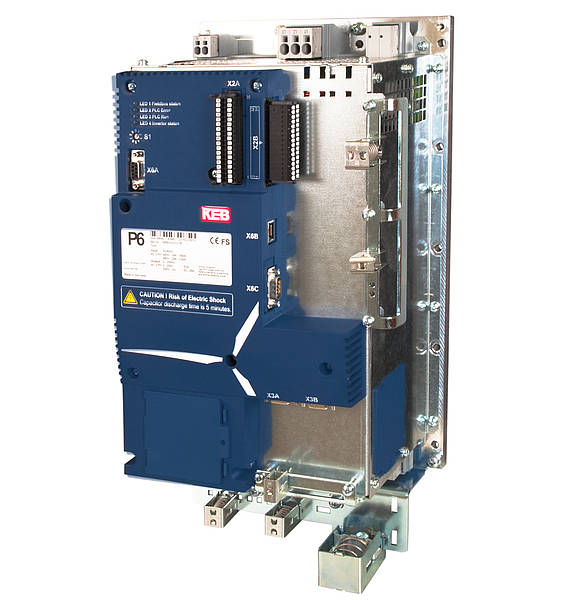Posted on 5th Mar 2024

Variable Frequency Drives (VFDs) have revolutionized the realm of motor control, offering unprecedented flexibility, efficiency, and precision in adjusting motor speed. In this article by CM Industry Supply Automation - Lenze Drive & Keb Drive supplier, we delve into the diverse advantages, potential drawbacks, and wide-ranging applications of VFD technology.
Energy Efficiency: One of the most significant advantages of VFDs lies in their ability to optimize energy consumption by precisely matching motor speed to the required load. Unlike traditional fixed-speed motors, which operate at full speed regardless of demand, VFDs allow motors to operate at lower speeds when less power is needed, resulting in substantial energy savings.
Soft Start and Stop: VFDs enable smooth and controlled acceleration and deceleration of motors, eliminating the sudden jolts associated with direct-on-line (DOL) starters. This soft start and stop capability reduces mechanical stress on the motor and connected equipment, extending their lifespan and minimizing maintenance requirements.
Improved Process Control: With VFDs, operators gain the ability to fine-tune motor speed according to specific process requirements. This precise control enhances product quality, consistency, and overall process efficiency across various industries, from manufacturing and HVAC to water treatment and agriculture.
Reduced Wear and Tear: By eliminating the need for frequent starts and stops, VFDs reduce mechanical wear and tear on motors, belts, gears, and other components. This results in extended equipment lifespan, reduced downtime, and lower maintenance costs, contributing to overall operational efficiency.
Dynamic Speed Adjustment: VFDs offer dynamic speed adjustment capabilities, allowing motors to adapt to fluctuating load conditions in real-time. Whether it's responding to changes in production demands or optimizing energy usage based on environmental factors, VFDs provide unparalleled flexibility and responsiveness.
Initial Cost: While VFDs offer long-term energy savings and operational benefits, they often come with a higher initial investment compared to conventional motor control methods. This upfront cost can be a barrier for some businesses, particularly smaller enterprises or those operating on tight budgets.
Harmonic Distortion: VFDs can introduce harmonics into the electrical system, potentially causing interference with other sensitive equipment and affecting power quality. To mitigate this issue, additional filtering or harmonic mitigation measures may be required, adding complexity and cost to the installation.
Technical Complexity: Implementing and configuring VFDs requires specialized knowledge and expertise. From selecting the appropriate drive size and type to programming the control parameters, proper installation and setup are crucial for optimal performance. Inadequate installation or improper configuration can lead to inefficiencies, malfunctions, or even equipment damage.
HVAC Systems: VFDs play a vital role in heating, ventilation, and air conditioning (HVAC) systems, where they regulate fan and pump speeds to match building occupancy, temperature, and ventilation requirements. By adjusting motor speed based on real-time demand, VFDs optimize energy usage and improve comfort levels while reducing operating costs.
Industrial Automation: In manufacturing and process industries, VFDs are used to control conveyor belts, pumps, compressors, and other machinery, allowing for precise speed control and synchronization with production processes. This enhances productivity, ensures product quality, and enables adaptive manufacturing strategies.
Renewable Energy: VFDs are integral components in renewable energy systems such as wind turbines and solar photovoltaic (PV) installations. By adjusting generator or motor speeds to match varying wind or solar conditions, VFDs maximize energy capture efficiency and grid integration, contributing to the growth of sustainable energy sources.
Water and Wastewater Treatment: VFDs are extensively utilized in water and wastewater treatment plants to control pumps, blowers, and aeration systems. By modulating motor speeds according to flow rates and process requirements, VFDs optimize energy consumption, reduce chemical usage, and enhance treatment efficiency.
In conclusion, Variable Frequency Drives (VFDs) such as Lenze Drive, Keb drive offer a plethora of advantages, ranging from energy efficiency and process control to reduced maintenance and enhanced equipment longevity. While they may pose challenges such as initial cost and harmonic distortion, their diverse applications across industries underscore their indispensable role in modern motor control systems. As technology continues to evolve, VFDs are poised to remain indispensable tools for achieving optimal performance, efficiency, and sustainability in diverse applications.